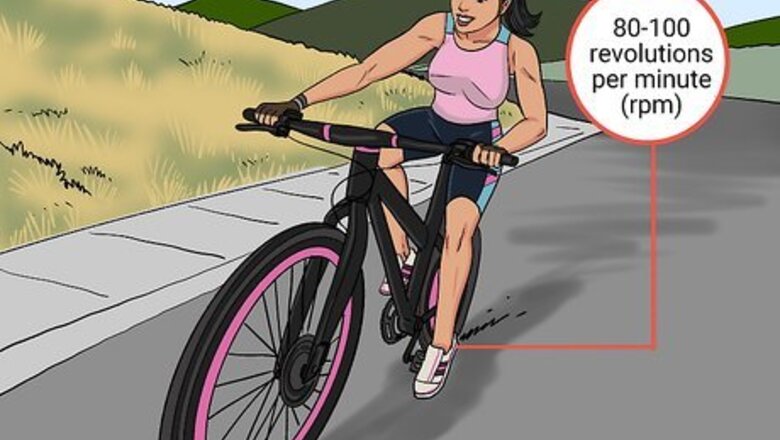
views
Building Biking Habits
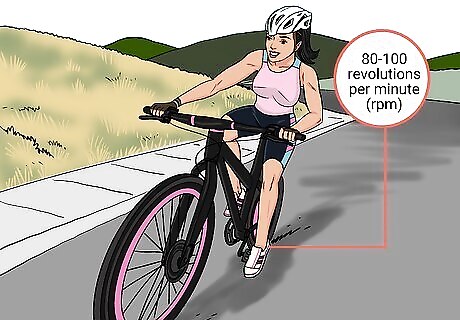
Crank the pedals 80-100 times per minute to help your muscles last. Put your bike into a gear that lets you comfortably move the pedals 80-100 complete rotations each minute. This will help your leg muscles last longer and move your bike along quickly and efficiently. Remember to switch to an easier gear whenever you’re going uphill, so you can maintain the same pedaling cadence. You could get an RPM monitor for your bike to keep track of the exact number of rotations you are pedaling per minute and help you stay in the 80-100 range.
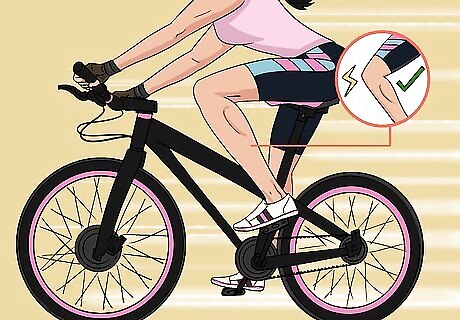
Keep your upper body still and let your legs do all the work. Avoid moving your upper body around while you ride, which will use up energy unnecessarily without helping you go faster. Focus on relaxing your upper body and put all your energy into pedaling with your legs. If you find it hard to pedal without moving your upper body side to side or leaning forward and back, try riding in an easier gear that allows you to do all the work with your leg muscles.
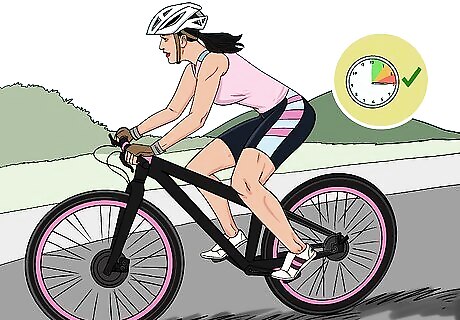
Work harder in the last hour or so of your ride, if you’re riding a long distance. Resist the temptation to ride your hardest at the beginning of a ride. Your legs generally use the first hour or so of a ride to warm up, so riding hard at the beginning will wear them out faster. Put the most effort into the last hour of your ride to maximize your energy use. For example, if you’re going on a ride for 3 hours, pedal at a slow, comfortable pace for the first hour to avoid tiring out at the beginning. You can then increase your level of effort during the second hour after you’re warmed up, but don’t give it 100% yet. Once you pass 2 hours of riding, work as hard as you can for the last hour of the ride.
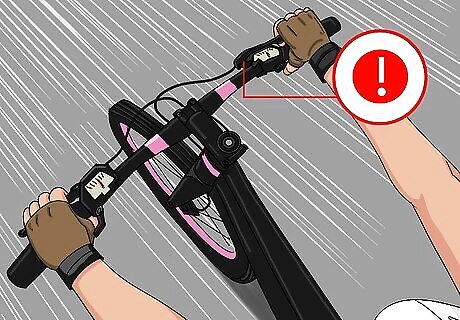
Reduce the amount you brake for comfort during a ride. It’s common for riders, especially new ones, to brake when they feel like they’re going faster than they’re comfortable with, particularly when going down hills. Try letting yourself go as fast as you can and only use your brakes when you need to in order to keep control or stop to stay safe. Every time you brake and slow down, you have to work harder to pedal back up to speed again. This lowers your overall speed over distances and causes you to use more energy unnecessarily.
Decreasing Riding Resistance
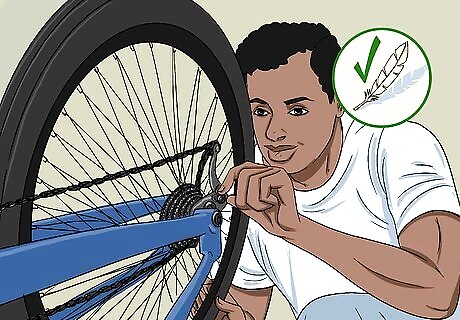
Decrease the total weight of your bike and equipment to go faster. Get a lighter bike or switch certain heavy components of your bike for lighter ones to decrease its weight. Limit the amount of equipment you carry and wear the lightest clothes possible. This will decrease the force of gravity acting on you and your bike. For example, you could switch to a carbon fiber bike or change parts like the handlebars and forks for lighter versions to decrease your bike’s weight. If you ride with a backpack, take anything out of it that you don’t need before you get on your bike.
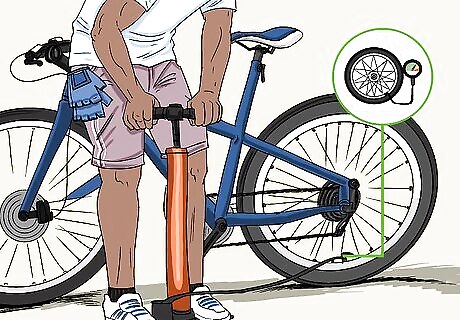
Pump up your tires all the way before you ride to lower rolling resistance. Underfilled tires will require you to move more slowly. Always fill up your bike’s tires to the recommended pressure level before you ride to increase their rolling speed.Tip: If you notice your tires are flattening partially while you’re riding, stop and fill them up until they are firm enough that they don’t flatten when you’re pedaling on your bike. Keep a small, portable tire pump with you on your rides for this. You can also use thinner tires for less rolling resistance. This is why road bikes have much thinner tires than mountain bikes, so they can go faster on flat, paved surfaces.
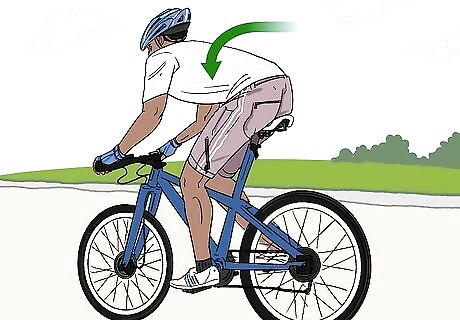
Bend down and tuck in your elbows to make yourself more aerodynamic. Lower your body over your bike towards your handlebars to lower the wind resistance and drag caused by your body. Tuck your elbows in underneath your body so they don’t catch wind either. Wearing tight clothing also helps with your aerodynamics. Baggy clothing will basically act like a sail and catch wind, causing you to slow down. Tight-fitting clothing, like cycling shorts and jerseys, will catch very little air and create the least amount of drag.
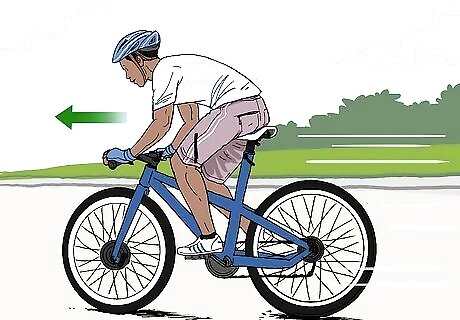
Ride with the wind behind you, if possible, to decrease wind resistance. This isn’t always practical if you have to stick to a certain route, but if you can modify your route according to the wind direction you can use the wind to your advantage. Cycle in a direction that goes with the wind, so it helps push you along instead of creating resistance. If you have to ride into a headwind at some point, try to do so at the beginning of the ride when you are feeling freshest, then ride with the wind at your back towards the end of your ride when you’re more tired.
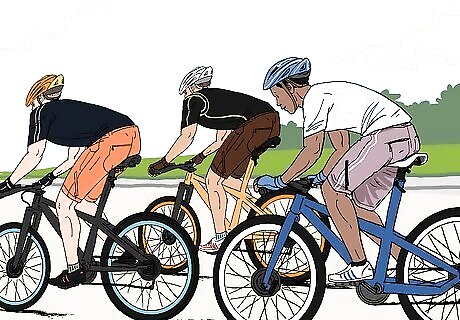
Cycle with a group, if possible, to go faster by drafting. Drafting is when you ride behind someone to cut down on wind resistance. Go on group bike rides to benefit from this. For example, if you have other friends who cycle, you can plan weekly group rides to mutually benefit from the increased speed that drafting provides. You could also look for a local cycling group on social media or a meetup-type app or site.
Caring for Your Body
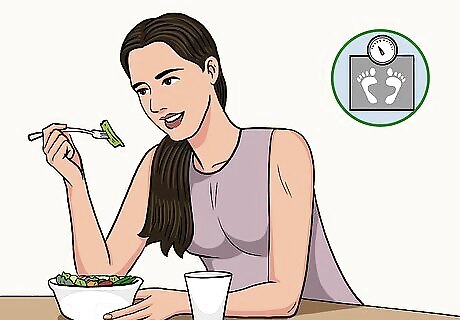
Lose weight if you’re overweight. Losing weight will cause you to go faster without putting any additional effort into pedaling. You will have less body weight to move against gravity and your body will be smaller, so it won’t catch as much wind resistance either.Tip: Small changes to your diet and habits can have big effects on your weight. For instance, not adding sugar to your coffee or riding your bike for an extra 30 minutes every time you go for a ride can help you lose weight without too much effort. If you’re not overweight, don’t try to lose weight just to go faster on your bike. This can be very unhealthy. Focus on other methods and techniques for increasing your speed.

Do interval training to increase your average speed. Choose obstacles or markers along your cycling route, such as sign posts, trees, or anything else along your path that’s in your line of vision. Pedal as hard as you can until you pass a chosen obstacle, then ease up and pedal at your normal pace. Choose another landmark to pedal to at your normal pace to give yourself a rest, then do another interval of hard work. For example, if you’re riding along a street with a bunch of lamp posts, you could pedal hard until you pass 5 lamp posts, then pedal at a normal pace past 10 more lamp posts, then do another interval of hard work for 5 lamp posts, and so on. As an alternative to using landmarks to control your intervals, you can time yourself by counting in your head or using a stopwatch. Try pedaling hard for something like 2 minutes, then rest for 5 minutes before you do another interval of fast pedaling.

Practice riding in lower gears that are harder to pedal to build muscle. Put your bike into a gear that requires you to pedal somewhere around 50 cranks per minute to keep moving. Pedal at this speed for about 1 minute, then switch back to your normal pace. Do this 10 times in 1 or 2 rides every week to build your cycling muscles. If you’re pedaling in a hard gear that makes you do less than 50 cranks per minute, put your bike into an easier gear. Otherwise, you can strain your knees and get injured, rather than productively build muscle.
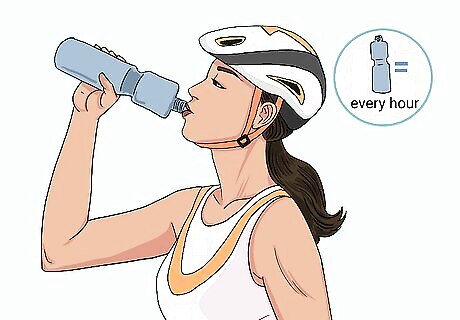
Drink at least 1 bottle of water every hour of riding to stay hydrated. Bring a water bottle on every ride and aim to drink the whole thing every hour. Stop and fill your bottle whenever it’s empty. If you’re going on a long ride where you won’t be able to fill up your bottle along the way, bring multiple bottles or wear a backpack with a water reservoir that holds more water than a standard bottle.
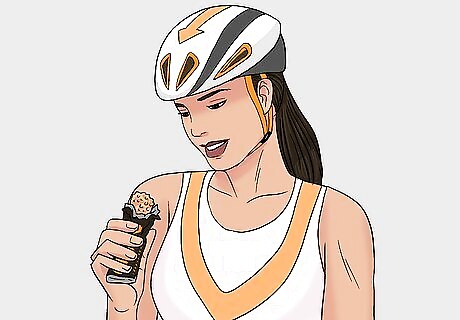
Eat something every hour if your ride is longer than 2 hours to fuel your body. Have a snack like an energy bar, some trail mix, or a small sandwich every hour on long rides. This will provide your body with the energy it needs to keep going. Aim to eat small, healthy foods that are high in energy and nutrition. Avoid eating large, heavy meals while you’re cycling. Feel free to eat a big meal after your ride, though! For example, if you know your ride is going to take about 4 hours, you can bring an energy bar to eat after the first 2 hours and something like a peanut butter sandwich to eat after 3 hours.















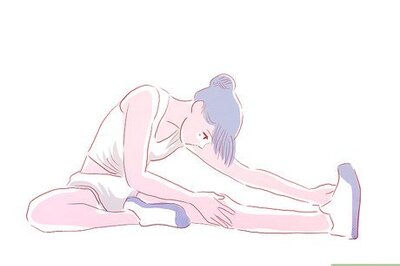


Comments
0 comment